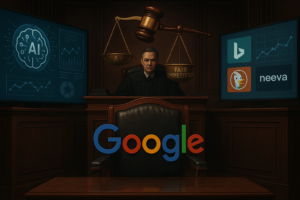The Ethical Dilemma of AI in Education: Should Teachers Use AI for Grading?
The incorporation of artificial intelligence (AI) into educational settings has sparked significant debate, particularly surrounding its use in grading student work. While many educational institutions have strict policies against students using AI tools to complete assignments, the question remains: should educators be held to the same standard when it comes to assessing student performance?
Advantages of AI in Grading
The use of AI for grading can offer various advantages. For one, it can provide a faster and more consistent evaluation of student submissions. AI systems can analyze patterns in writing and automatically score essays based on established criteria, potentially:
- Reducing the workload of teachers
- Allowing teachers to focus on more qualitative aspects of teaching, such as providing personalized feedback and support
Ethical Implications of AI in Grading
However, the ethical implications of employing AI for grading are multifaceted. One primary concern is the potential for bias in AI algorithms. If the data used to train these systems reflects existing biases, the AI may replicate or even exacerbate these issues in its grading. This raises important questions about:
- Fairness and equity in education
- How educators can ensure that AI tools are impartial and do not negatively impact marginalized students
Another concern lies in the loss of the human touch in education. Grading is not merely a mechanical process; it involves understanding context, nuance, and individual student growth. Teachers often provide valuable insights into a student’s thought process and creativity, which AI may overlook. The risk is that relying on AI for grading could:
- Create a sterile educational environment
- Undermine the relationship between teachers and students
Implications for the Educational Landscape
Moreover, the implications of using AI in grading extend beyond immediate academic outcomes. The practice could shift the educational landscape, influencing:
- How teachers approach assessment
- How students perceive learning
If students know that their work will be assessed by AI, they may be more inclined to conform to algorithm-driven expectations rather than explore creative or unconventional ideas. This could stifle critical thinking and creativity, essential skills in today’s fast-evolving world.
Proponents of AI-Assisted Grading
On the other hand, proponents of AI-assisted grading argue that it can enhance consistency and transparency. Automated grading can help establish clear benchmarks for evaluation, making it easier for students to understand how their work is assessed. This can foster a sense of accountability among students, encouraging them to meet specific standards.
Conclusion
Ultimately, the ethical considerations of using AI in grading are complex and warrant careful deliberation. Stakeholders in education must weigh the benefits of efficiency and consistency against the potential risks of bias and diminished human interaction. As technology continues to evolve and integrate into our lives, it is essential to establish guidelines that not only enhance educational practices but also uphold the values of fairness, equity, and human connection.
In conclusion, while the use of AI for grading presents exciting possibilities, it is crucial for educators, policymakers, and technology developers to engage in ongoing conversations about the ethical implications. Striking a balance between innovation and integrity will be essential to ensuring that AI serves as a beneficial tool rather than a detrimental force in education.


